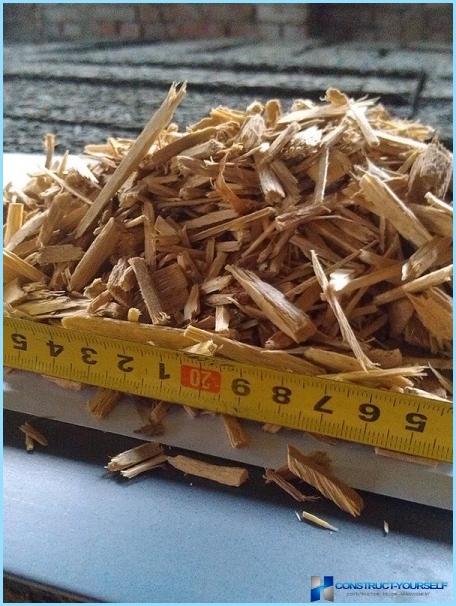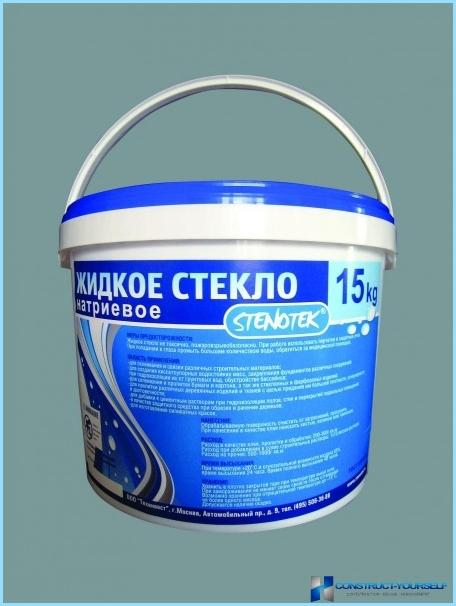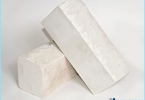The contents
As technological progress moves forward, there are new materials for building houses with his own hands. If earlier it was limited to wood, stone or brick, today there are different types of concrete that are superior to other materials characteristics. One such material is the arbolit. This is a unique material which combines the benefits of both concrete and wood. Its composition is quite simple and you can prepare a solution with their hands. It is noteworthy that it can be used as ordinary concrete, by pouring the mixture into the formwork, and can be made in the form of blocks, for ordinary masonry. Wood concrete blocks you can buy in a specialty store, or to prepare a solution with their hands, making the blocks, ready mix.
All you need to know the exact composition of arbolita, the proportions for mixing the mixture and the technology of its preparation. Let’s look at each in detail.
Concrete block – what it consists ↑
Arbolit, which form concrete blocks for masonry, consists of 3 main components:
- filler;
- mineral binder;
- chemical additives and water.

By connecting all of these elements it turns a concrete solution which is subsequently used to generate blocks. The composition is quite simple and everyone can do stuff for their own purposes. The material itself is lightweight, so blocks are ideal for tubs. Their advantage, compared to the aerocrete and concrete blocks, is a great border of safety. They are resistant to cracks and blows.

Despite the fact that the main ingredient is sawdust (chips), arbolit is highly valued and is not inferior to the performance of traditional materials. On the contrary, the concrete blocks retain heat well and create a good atmosphere in the room.
Organic filler ↑
The lion’s share in arbolite blocks is wood chips. It is the main material, which is included in its composition. Such an organic filler can be easily purchased for little money. You should contact the local sawmill, where there is wood waste, and to negotiate with workers. Mainly used coniferous trees and hardwood. Fir, pine, spruce, aspen, beech, birch and poplar are ideal to make them concrete solution. You can also use flax.

Most often used wood filler: granules, shavings and sawdust in the ratio of 1:1 or 1:2, wood chips, shavings and sawdust, in a ratio of 1:1:1. All the proportions are measured in volume. For example, if you need to get the ratio of 1:2, it takes 1 bucket of sawdust and 2 buckets of chips. Sawdust can easily be replaced by the fires of flax or hemp stalks, the composition is not affected.
What are the requirements for filler? First, it is important to choose the right size. Large sawdust is not recommended because when product comes in contact with water, they can increase in volume. As a result, the unit may break down. If you use too fine particles, it increases the flow of the cement mixture. The recommended particle size is 15 or 25 mm long and not more than 2-5 mm wide. Raw materials should not have leaves and other impurities.

The flax ↑
Full filler, added to the solution, is flax. As it has sugar, be sure to apply chemical additives. To improve the quality of the finished mixes for blocks, fire pre-processed limestone milk, in proportions: 200 kg fires per 50 kg of lime. Then all aged a few days in the heap, then everything is ready for the production of arbolita. Thanks to this technology the consumption of cement is significantly reduced. 1 mThree arbolita need 50-100 kg of cement.

Due to the fact that the waste composition of organics chemicals, soluble water, among which are resin acids and sugar, it prevents good adhesion between the particles. To eliminate sugar, woodchips required to withstand the air 3 or more months, or to process it with limestone. In the second case, the mixture is aged for 3-4 days. The content is stirred 2 times a day.
Mineral binder ↑
You can not make a solution with your hands without a binder component. He makes concrete blocks durable, and suitable for masonry. As a binder used Portland cement M400, M500, or even higher.

Its consumption depends on the type of filler, particle size, cement type, characteristics, etc. to have a little focus, you can define consumption as follows: a ratio of 17 must be multiplied by the desired brand arbolita. For example, you need to prepare a solution, brand of 15 (B1). In this case, 1 mThree arbolita need 255 kg of cement.
Chemical additives ↑
Properties that have wood concrete blocks, are directly dependent on chemical additives. Their use is mandatory in any case, no matter in what climate are working. Thanks to additives, filler can be used without aging, because they neutralize the sugar and other substances that improves the quality of the finished blocks.
As such additives can be used:
- liquid glass (sodium silicate). Closes all the pores in the wood so the moisture will not get inside. Used after removing sugar;
- slaked lime. She breaks down the sugar and kills the microorganisms in the sawdust;
- sulfuric acid aluminum. Perfectly breaks down sugar. Due to the component part quickly gaining strength;
- calcium chloride. Kills all germs and gives wood antiseptic properties.

Aluminium sulfate and calcium chloride are the best supplements. The proportion of additives 2 to 4% by weight of cement, or from 6 to 12 kg per 1 mThree. Additives can be combined together.
Proportions for concrete blocks ↑
To make concrete blocks with your hands it is important to know not only the composition, but the proportions. The ratio of all components is as follows: 4:3:3 (water, wood chips, cement). Chemical additives 2-4% of the total weight.
For making 1 mThree arbolita their hands, from which are made the blocks for masonry, you will need:
- 300 kg of wood waste;
- 300 kg of Portland cement;
- 400 litre water.
To the solution was added calcium chloride or other chemical. It’s a classic composition that can be easily done by hand. All what you need: a mixer or large capacity for mixing, buckets, shovels, fork (for mixing by hand) and all components of the arbolit. The process of execution of works the following:
- Filler (wood chips) poured into a container and moisten with water. Then grip with the cement will be better.
- Then, gradually added to the cement. The content is thoroughly mixed in a concrete mixer or with your hands, with fork.
- It is time to add water, which dissolved chemical additives. All mixed again.
- Like cement and water you want to add immediately, but slowly, in small portions. So the mixture is easier to mix and better components will be interconnected.
- After the solution, we place it in the prepared tins so that they would have the form of blocks for masonry.

Is the composition and mixture proportions concrete blocks, which can be done by hand. All that is required is to be careful and strictly follow the instructions for its preparation. Below is a table which will help you to understand what is brand arbolita and what are the proportions of the components for its preparation.

What is mortar used for masonry ↑
It’s a logical question. After all, if the arbolit specific material, can masonry concrete blocks will require a specific solution? No. Wood concrete blocks are laid on ordinary cement mortar, which can make any. It consists of cement, sand and water. Mixing ratio – 3:1. Water is added until, until the solution has reached the desired consistency. This mix is ideal for laying blocks with their hands.
So, knowing the composition, proportions and mixing technology of concrete solution, you can make blocks for your goals.







